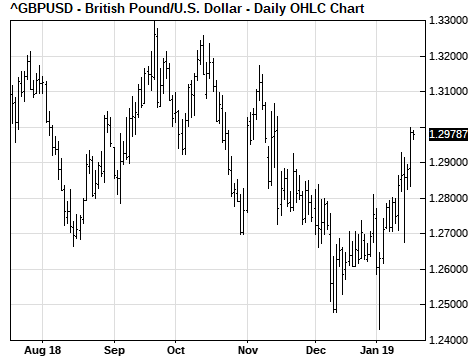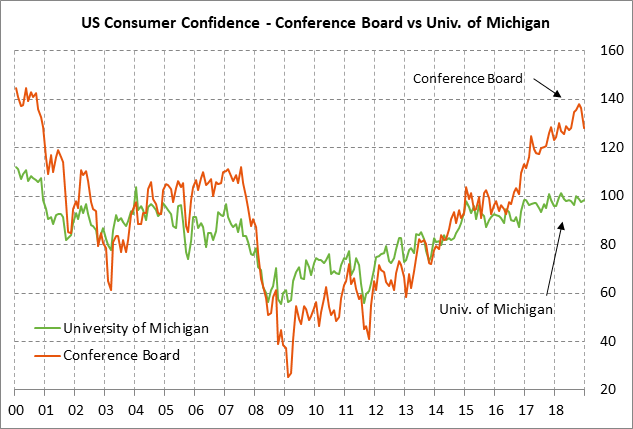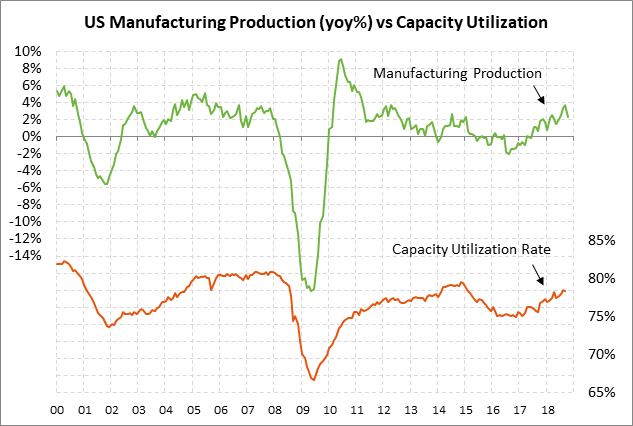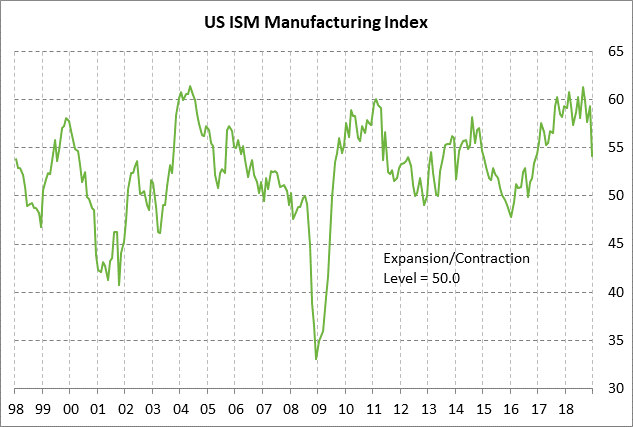- Report that U.S. may scale back Chinese tariffs temporarily raises market hopes
- UK Parliament next week will have a Brexit vote-a-rama
- U.S. consumer sentiment report may illustrate concern about shutdown and stock market
- U.S. manufacturing production expected to revive a bit
Report that U.S. may scale back Chinese tariffs temporarily raises market hopes — The U.S. stock market rallied on Thursday afternoon after the WSJ reported that Treasury Secretary Mnuchin is pushing his colleagues in the administration to scale back tariffs on Chinese imports in an attempt to get more cooperation and a better deal in the US/Chinese trade talks. However, the stock market fell back after the Treasury Department denied the WSJ report.
The report said that while Mr. Mnuchin is pushing for a rollback of tariffs, USTR Lighthizer opposes that move and wants to keep maximum pressure on China. While President Trump clearly sides with Mr. Lighthizer’s hawkish views on trade, Mr. Trump has also reportedly become more interested in getting a US/Chinese deal done in order to boost the stock market. In addition, there isn’t much more time to apply a new round of pressure to China with Mr. Trump’s first term winding down next year.
There are now only six weeks left until the March 1 deadline for the US/Chinese trade talks and yet there are many major issues still outstanding. A critical point in the talks will come in two weeks on Jan 30-31 when Chinese Vice Premier Lui, President Xi’s top economic advisor, meets with USTR Lighthizer and Treasury Secretary Mnuchin in Washington. After that meeting, the markets should have a much better idea of whether China will agree to the Trump administration’s more intrusive demands such as stringent IP protection and roll-backs of the “Made in China 2025” program and state subsidy support.
US/Chinese mid-level officials at their meeting early last week in China reportedly made progress on Chinese promises to buy more U.S. goods. However, the more difficult issues were left for higher-level talks such as the Lui-Lighthizer talks in two weeks.
UK Parliament next week will have a Brexit vote-a-rama — Prime Minister May this Monday is scheduled to deliver her Plan B for a Brexit separation agreement, which is not likely to be substantially different than the Plan A that went down to an epic defeat in Parliament this week.
Parliament on Tuesday will then begin debating the Plan B bill and considering amendments. There is talk that political leaders may use the amendment and voting process to test the support in Parliament for a variety of different types of Brexit provisions, perhaps zeroing in on some plan that could attract a majority vote in Parliament.
Ms. May on Thursday began talks with opposition parties to see if she could gain their support for some common plan. However, those talks seem unlikely go get far if she sticks by the promise that she reiterated to Conservative Party members on Thursday that she will not allow the UK to end up in a customs union, which is the softer option preferred by some opposition members. The opposition talks also aren’t going well since Labour Leader Corbyn refuses to hold talks with Ms. May as long as she continues to threaten to allow a no-deal Brexit on March 29.
Ms. May continues to claim there will not be a delay in the March 29 Brexit date. However, her request for a delay seems inevitable since there simply isn’t enough time to either find a new Brexit solution or prepare for a hard Brexit. It seems unlikely that Ms. May would allow the UK to crash out of the EU on March 29 since a clear majority of the UK parliament does not want a hard Brexit on March 29 and nor does the EU.
The current odds of the UK leaving the EU by April 1 without a Brexit deal are 5/2 (i.e., a probability of 29%), according to www.oddschecker.com. We suspect that the chances of the UK crashing out of the EU on March 29 are probably lower than those betting odds since Ms. May is making the situation appear more dire than it is with her brinkmanship.
Sterling (GBPUSD) on Thursday rallied to a new 2-month high and closed the day up +0.8%. Sterling rallied to a 2-month high since Prime Minister May’s government survived this week’s no-confidence vote and since the markets are relatively confident (so far) that the UK will not crash out of the EU on March 29 and will instead either get a last minute agreement or a delay in the deadline.
U.S. consumer sentiment report may illustrate concern about shutdown and stock market — The market consensus is for today’s preliminary-Jan University of Michigan U.S. consumer sentiment index to show a -1.5 point decline to 96.8, more than reversing December’s +0.8 point increase to 98.3. U.S. consumer sentiment remains in very strong shape in general at only 3.1 points below the 15-year high of 101.4 posted in March 2018. However, today’s report will illustrate whether significant consumer concern has emerged from December’s sharp downside stock market correction or the 28-day partial U.S. government shutdown, which is affecting 800,000 government employees, up to 10,000 government contractors, and many private businesses servicing government employees in their neighborhoods.
U.S. manufacturing production expected to revive a bit — The consensus is for today’s Dec manufacturing production report to show a +0.3% m/m gain, improving from Nov’s report of unchanged. Dec industrial production report is expected at +0.2% m/m after Nov’s strong report of +0.6%. The markets are bracing for a slower manufacturing sector after the Dec ISM manufacturing index fell sharply by -5.2 points to 54.1, indicating a significant drop in manufacturing confidence. Manufacturers have plenty to worry about including the U.S. government shutdown, slower overseas economic growth, tariffs, the stock market correction, and the widespread talk about an eventual recession.





